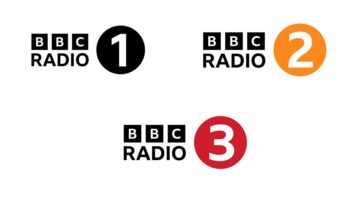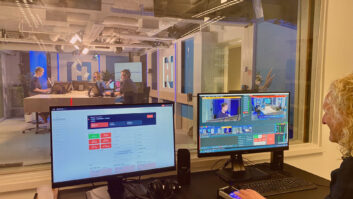Podcasting, clips for social media and personalized radio all require programs to be produced in a new way. The BBC wants to make the most out of the content its program-makers produce every day, so that it�s fit for multiplatform radio.
The technology in a radio studio may have changed since the 1960s, but the way to actually build a radio program is very similar to back then: radio is produced in a linear way. In real-time, everything is mixed in the studio to one stereo stream, and then a station will broadcast, stream or store that content. It�s a destructive process: lots is thrown away to produce one definitive piece of output.
However, the BBC is thinking about doing things differently. Dave Walters works for BBC Design & Engineering as Head of Product Systems and Services, and recently gave a talk at the Radio TechCon conference in London.
�In our new world, where as content makers we are competing in a new global market of IP delivered video, social media and audio, we are thinking differently about how we technically make our content to give us new choices and opportunities to compete,� he told me via email.
There are a number of companies trying to rethink how radio works. NPR One and Omny Studio are both taking radio output and �atomising� it: cutting it into short excerpts with metadata which affords new personalised products. Walters tells me that his team are approaching this concept from a different angle.�
�What we�re trying to do is to change how we make radio, not how we use it afterwards. We�re capturing everything that happens in the studio: fader positions, clean individual audio tracks or segments, all fully described with metadata. In essence, we�re creating audio objects in real time as the program is made. This way we can then re-assemble those objects back into clips or segments, or even the full program if we wish. For us, it�s about re-imagining the mechanisms of creation.�
�This isn�t about re-inventing mixing desks – a studio user will see and use a very traditional-looking mixer. What we hope to do is to deliver some standards from the work we are doing to allow the manufacturing industry to understand what we�re doing and to develop new tools.�
This work offers a radio program-maker a familiar production experience, but essentially adds a multitrack audio editor, automatically recording every audio component and every fade and gain level. So an editor could go back and fix a bad fade; cleanly edit a voiceover; or produce a different version of a live program for a different platform.
Alternatively, a machine could help with production work: prototypes have already been produced using speech-to-text transcripts that allow program-makers to edit audio by simply highlighting text in a word processor. Other opportunities for program-makers include automated transcripts, and automated music logging.
However, this offers considerable benefits for listeners using connected devices, according to Walters: �It will allow us to link our program subjects from one area to another. If you hear a news clip about a particular story, we can offer you a range of programs where that subject has been dealt with in more detail. It will keep a program�s component parts as separate items, so we can start to explore how we might make bespoke versions of programs to suit how much time you have available to listen.��
The BBC is testing the concept with a pilot �Internet-Fit� studio, pictured above. Walters tells me that the studio includes �an Audio Over IP Mixer, and an Object Based Recorder. We have a Virtual Server stack where we are hosting all of the studio Playout Systems and computers. We have replaced old-school KVMs with thin clients.� From the photograph, I recognize the Scisys Dira playout system, an Axia Fusion desk and equipment from Broadcast Bionics.
�Personalised radio has long been promised by the BBC, and this method of producing radio programs is sure to help that. In 2016, the BBC launched their iPlayer on-demand radio app across the world, and the BBC�s Director General, Tony Hall, has announced an ambition for a more comprehensive offering in future, as well as a target to reach 500m people across the globe by 2022.
Initial findings from the BBC�s Internet-Fit pilot studio will be available in early 2017.
�
�










